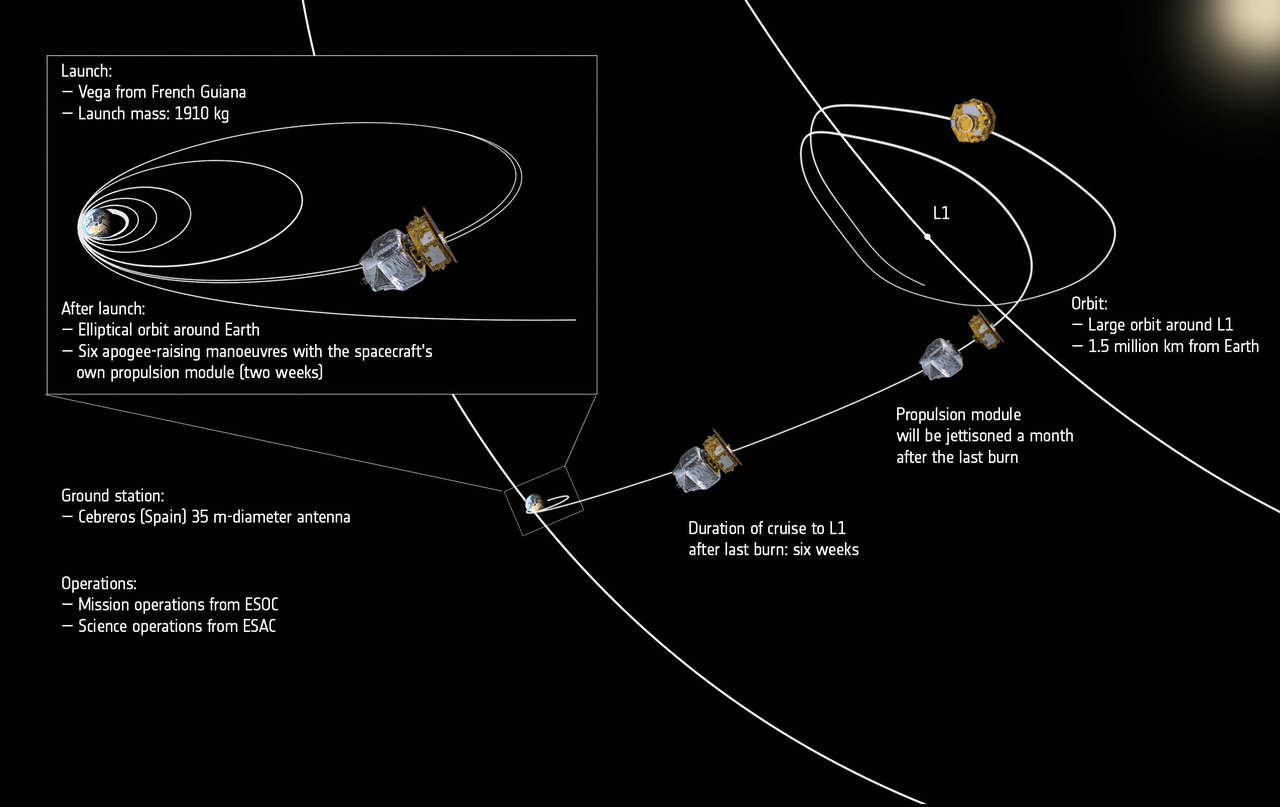[UPDATE 9 DEC 13:00 CET]
Report by LISA Pathfinder Spacecraft Operations Manager Ian Harrison
The actual performance of the fourth burn – ARM#4 – has been assessed and the result shows a 1.4% over-performance in ‘deltaV’ (change in speed) for the burn. This means the resulting LPF orbit is slightly larger than that planned, with a period a few mins longer than predicted.
[ORIGINAL POST 9 DEC04:05 CET]
Working in the Main Control Room at ESOC tonight, ESA’s Rolf Maarschalkerweerd, Deputy Spacecraft Operations Manager for LISA Pathfinder, sent in this report at midnight:
The fourth apogee-raising manoeuvre (ARM#4) is complete. The initial assessment again shows an excellent performance, similar to the three previous orbit-raising burns. The targeted ‘delta V’ (change in speed) of 806 m/sec was the largest within all the six planned orbit raising burns. ARM#4 raised the LISA Pathfinder apogee to about 430 00 km. Once a detailed orbit determination has been done by flight dynamics, the mission control team will start planning for the ARM#5 manoeuvre, set for 9 December at 23:55 UTC (10 December 00:55 CET).


Discussion: 3 comments
Little confused, I thought ARM-4 was to 7000 km not 43000 km based on the Dec 8 note by Florian on the ‘Getting where we want to go’ page. Maybe you can list again the intermediate orbits with their associated ARM numbers?
Jonathan, the list of intermediate orbits also contained the intermediate orbit after the test burn which was conducted prior to ARM#1, so the second orbit in the list is the orbit prior to ARM#1. The orbit after ARM#6 hasn’t been provided, since its details depend on the phasing with the moon and the variation in required apogee altitude can be several 100,000 km. Sorry for the confusion.
Got it, thanks for the clarification